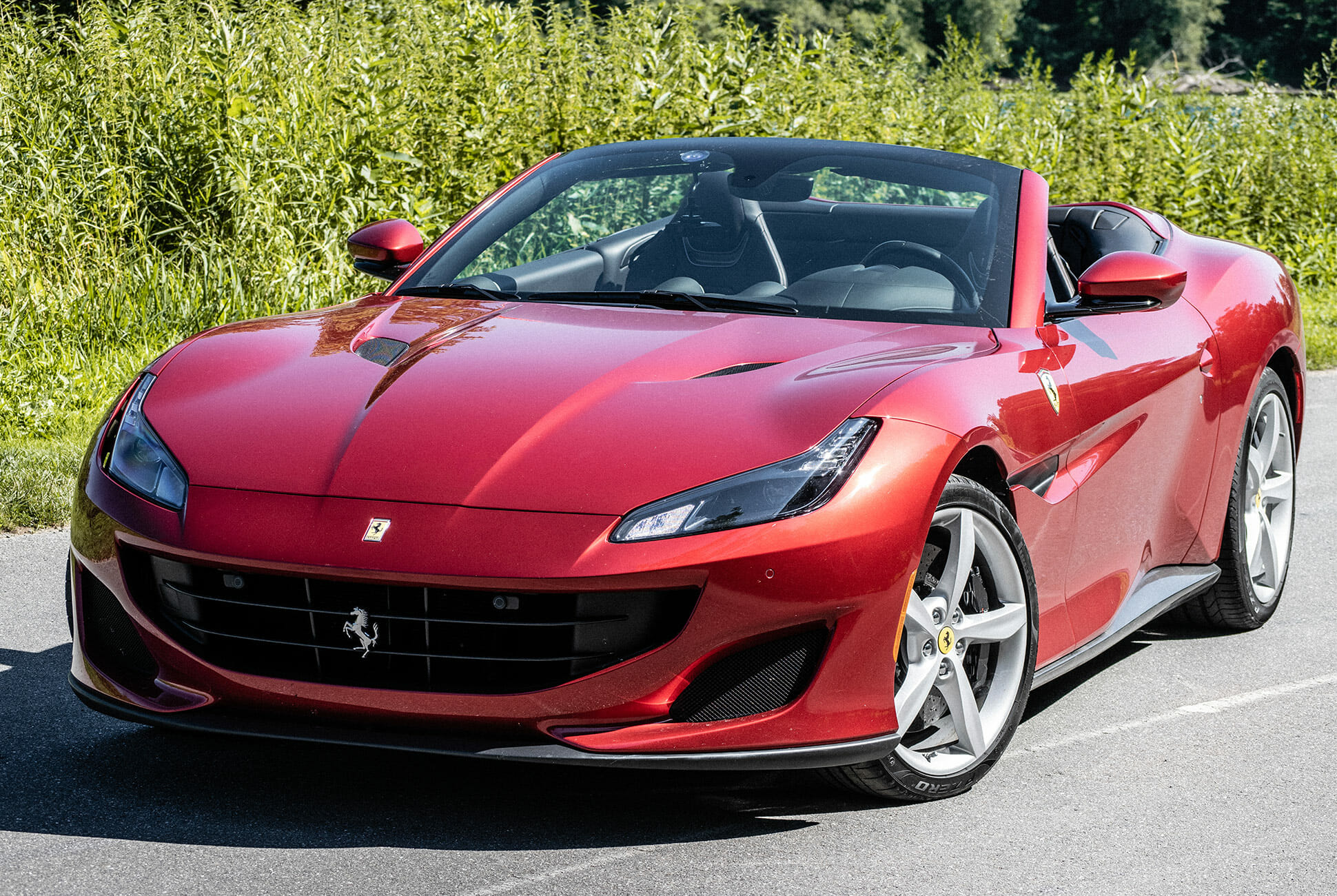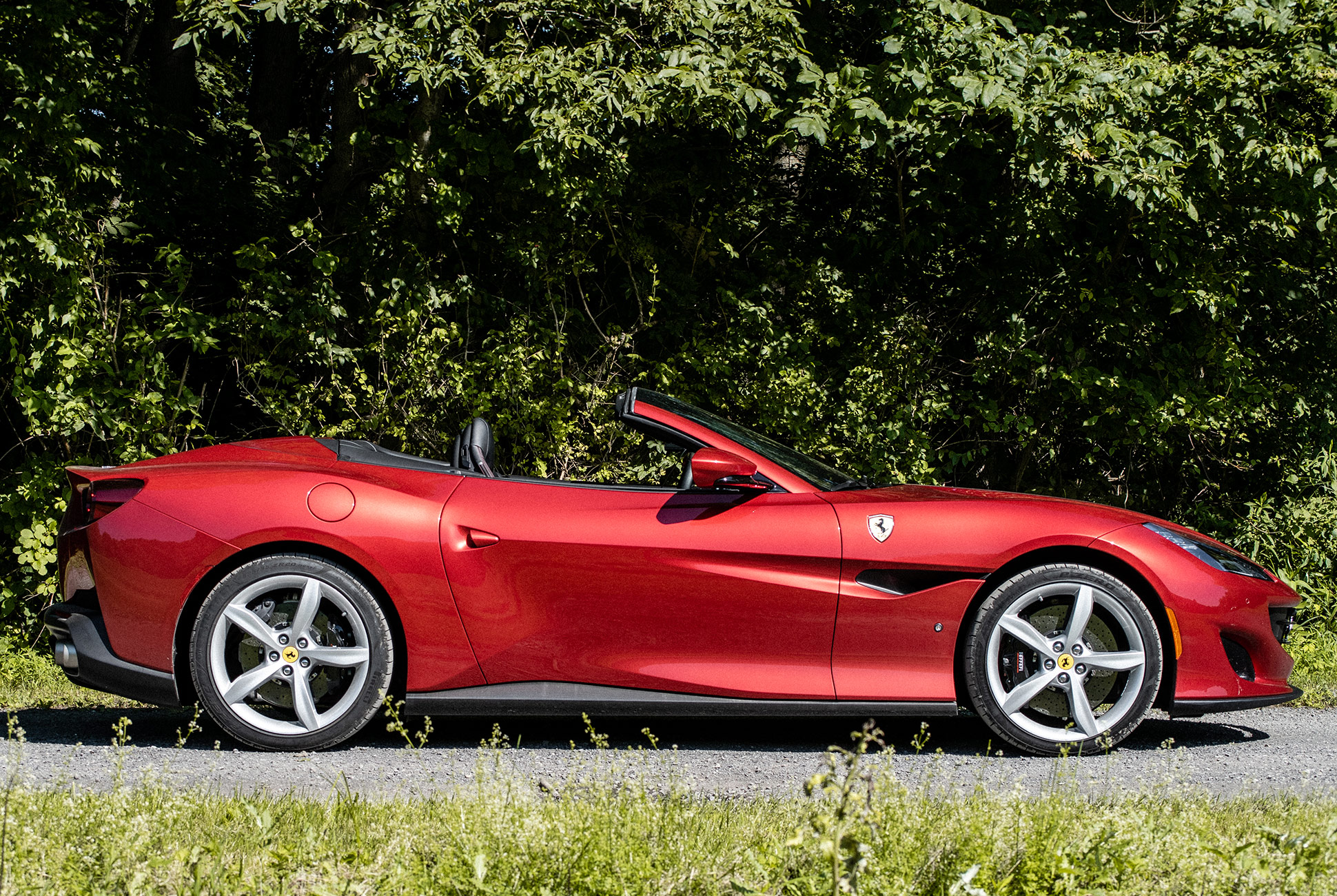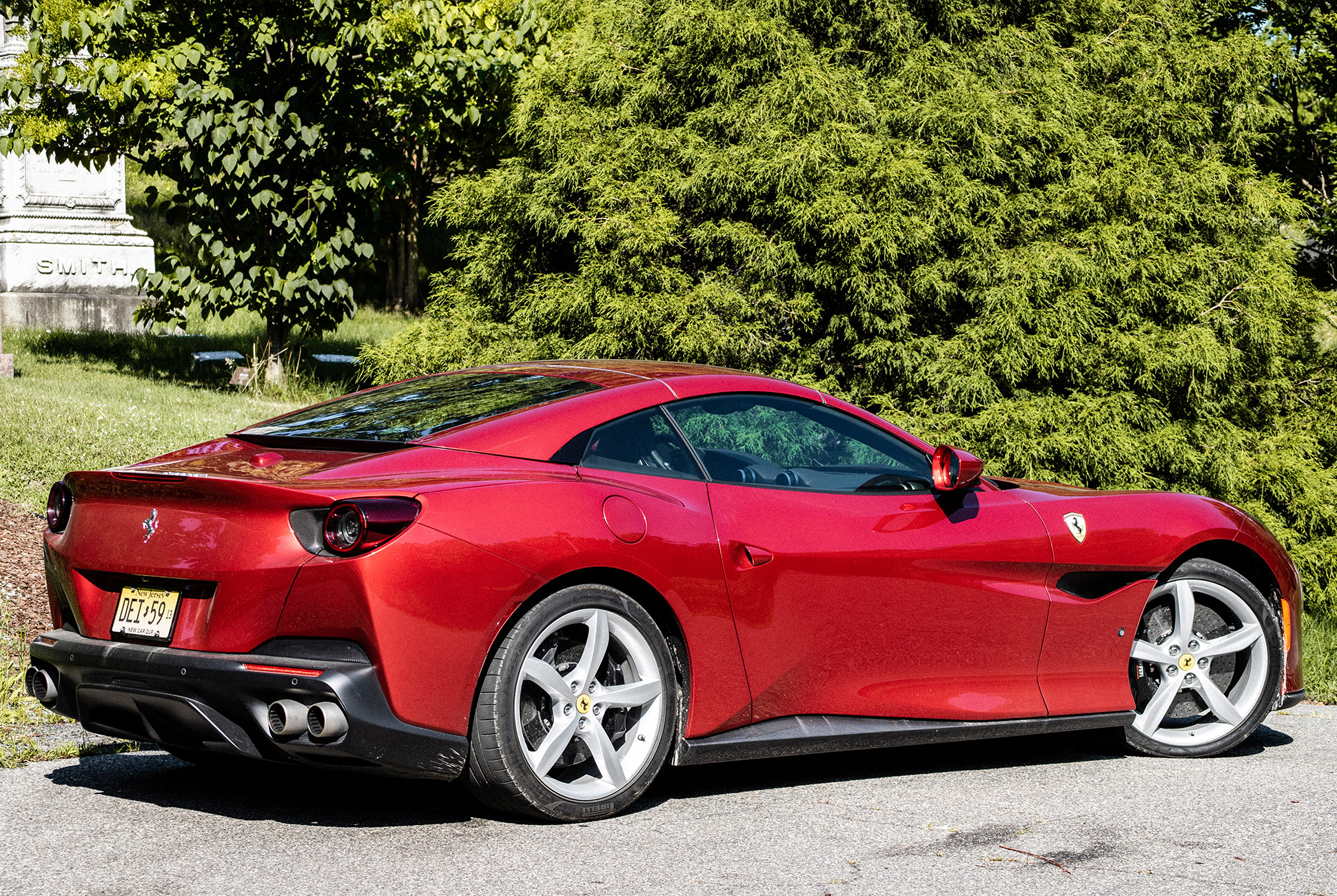The Ferrari California never received the respect it deserved. Yes, it was somewhat of a shameless attempt to steal buyers who would otherwise have bought up a Bentley Continental GT or a Mercedes-Benz SL63 AMG. Sure, the elevated rear beltline necessitated by its retractable hardtop kind of made it look like it took fashion cues from Steve Urkel. And yeah, the front end bore a “cannot unsee” resemblance to a praying mantis. But it was still a Ferrari, though — with a resonant V8 under the hood and a steering rack tuned by angels.
Maranello isn’t a place where people succeed by letting mediocre product stink up the showroom, though. The carmaker’s first crack at redoing the Cali involved a thorough facelift and the brand’s first turbocharged engine in decades (a motor that would go on to ooze into four-fifths of the lineup, as well as down the road to Maserati HQ), along with a big “T” appended to its West Coast moniker. It was faster; it was prettier; sales picked up. But it still never seemed to quite mesh with the rest of the lineup.
So Ferrari balled the California up, hurled it through the Nerf basketball hoop into the wastebin of history, and started with a clean sheet of paper to produce the Portofino. The car is new, but the mission brief hasn’t changed: Deliver a Ferrari that’s approachable enough to woo boulevardiers who generally prefer soft cruiser convertibles without losing the spirit of the brand in the process.
The Good: Uh, it’s a Ferrari. It turns, goes and stops with a verve other cars can match, but never replicate; every moment spent behind the wheel attacking a road has a tinge of magic to it. It responds to your inputs with a directness not found in most cars. It helps make even regular commutes a little less ordinary.
On a more practical note: It has one of the most intuitive, driver-focused cockpits on sale. The steering wheel feels almost aeronautical in its multifunctional efficiency, with all the controls needed for the actual act of driving are within a hand’s breadth of 9 and 3: drive modes, wipers, high beams, shifters, suspension softener and start button. Secondary controls you’ll use often — volume, cruise control, IP info panel, headlight switch — are on the dashboard, but mere inches away from your hands. Beyond that are a pair of widescreen displays that, while a bit laggy, offer plenty of physical controls for the important tasks and touchscreen capability for the rest.
Who It’s For: Enthusiasts seeking an open-top grand tourer that’s more entertaining to drive than the average convertible; wealthy showboats who simply want the image conferred by the badge.

Watch Out For: A lack of trunk space — which isn’t all that surprising for a Ferrari, but is for a gran turismo. The carmaker claims 10.3 cubic feet of trunk space, which is technically true, but only if you’re storing unpackaged Cool Whip. Folded down, the top occupies a good chunk of space, leaving an open box below it large enough for a rollaboard or a couple of backpacks. Even with the top up, there’s a firm box designed to block off the folding-top-safe luggage space that prevents you from sliding larger items in there with ease. Hey, Ferrari also claims it’s a four-seater, but that second row is only good for small woodland creatures. Throw your bags back there instead. (Just make sure there’s nothing in those bags that’s temperature-sensitive, because they’ll cook in the sun.)
Also, on a moral note: Yes, Ferrari buyers view money differently than most of us, but charging $4,219 for Apple CarPlay is absurd.
Alternatives: Porsche 911 Turbo S Cabriolet ($203,000); Aston Martin DB11 Volante ($219,581); Bentley Continental GT Convertible ($218,350); Mercedes-AMG SL65 ($154,450)
Review: I will fully admit to being a tad underwhelmed at the sight of the Portofino when it rolled up in front of our Fifth Avenue office on a rainy weekday. Sure, the off-menu red paint crackled, and with the top up to keep out the rain, it looked close enough to the heartbreaking 812 Superfast to confuse even our auto-obsessed deputy photo editor. But the thought kept poking out of the back of my brain: Does this really look as grabby as a Ferrari ought to?
Then I climbed inside, and before I could even adjust my mirrors, a trio teenage girls began snapping pictures in front of the car. Never underestimate the appeal of that damn Prancing Horse.

That said, it may be every bit a Ferrari to The Average Joe, but T.A.G. might find himself a little bit unimpressed when he engages it in a stoplight grand prix with his Trackhawk. It’s not slow, mind you; activate the launch control (it’s the round button marked “PS” on the shift arch), and it’ll crack off the 0-to-60-mile-per-hour dash in a claimed 3.5 seconds. But in an era where sub-three second 0-60 times are becoming shockingly common in the six-figure sports car realm, the Portofino feels almost ordinary off the line.
Some of that stems from the engine’s output of 591 horsepower and 560 pound-feet of torque, which, to keep it in horse-themed car terms, sits closer to the Shelby GT350 than the GT500; some of it also stems from the way Ferrari tuned the engine’s power delivery, deliberately moderating the torque in lower gears to smooth out the transition when the turbos spool up. The flip side, however, comes in the engine’s tractability: You can hear the turbos coming online more than you feel the change in power delivery; it just comes across as a building shove, building and building to the low-for-a-Ferrari 7,500-rpm redline.
Still, only the uninitiated think F-cars are about pure straight-line speed. Old Man Enzo’s heart lay in road racing, not drag racing; his cars are made to carry speed through turns as much as they are to gain it in the first place. The steering is quicker, the brakes bite harder right away than you’d expect from a grand tourer; that’s the inherent Ferrari-ness shining through. But once you’re dialed into how taut everything from your fingertips through the body to the suspension is, it becomes as easy to drive as a Miata.
Ferrari was one of the first automakers to integrate magnetorheological dampers in their suspension, and their time has been well-spent; the shock absorbers blot up imperfections with luxury-car grace in Comfort mode. (That is to say, the grace of modern luxury cars, which tend to ride on wheels as large as or larger than the 20-inch rims on my Portofino, and often on tires as aggressive as its Pirelli P Zeros.) Hit a patch of rough road after you’ve snapped the manettino switch from Comfort to Sport, and you can tap a small blue button near your thumb to shift the dampers back to bumpy-road mode. It’s a handy feature, though given the Portofino’s mission brief, you could probably just leave the dampers at their softest all the time; it’s not as though the car rolls like the Andrea Doria on winding roads in that setup.
Whether you’re hoofing it along the back roads or loping down the highway, you’ll want to use the paddle shifters. The seven-speed dual clutch’s automatic mode works fine enough for puttering around town, but unlike, say, Porsche’s brilliant PDK, it’s not made to outwit a clever driver. It’s there to make the tedious parts of life a little less boring, not to remove you from one of the essential tasks of driving altogether. You could have bought a Mercedes, the car seems to be saying, but you didn’t. You bought a Ferrari. Now own it.
Verdict: With the all-wheel-drive hatchback GTC4Lusso occuping showroom space alongside it, the Portofino is effectively the last traditional grand tourer Ferrari makes — heir to a legacy that stretches back to the 1940s. That was true of the California, too, but unlike that awkward machine, the Portofino seems worthy of carrying that torch. It wouldn’t be my first pick amongst Ferraris, nor likely yours. But it might be at the top of the gran turismo convertible list, especially for anyone who really loves to drive.

2019 Ferrari Portofino Key Specs
Powertrain: 3.9-liter twin-turbo V8; seven-speed dual-clutch automatic; rear-wheel-drive
Horsepower: 591
Torque: 560 pound-feet
0-60 MPH: 3.5 seconds (manufacturer’s estimate)
Top Speed: 199 mph
Price as Tested: $284,962
Ferrari provided this product for review.

Hot takes and in-depth reviews on noteworthy, relevant and interesting products. Read the Story

